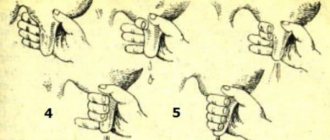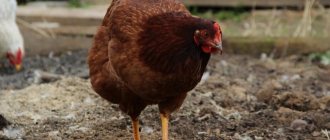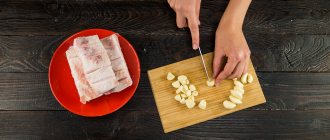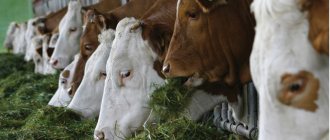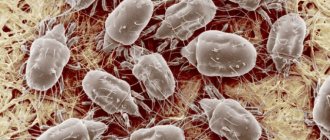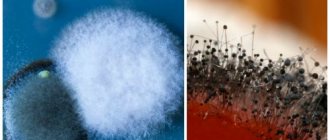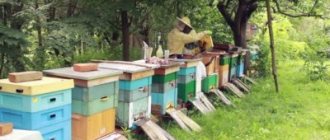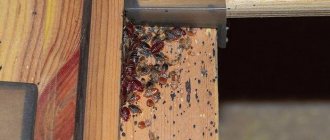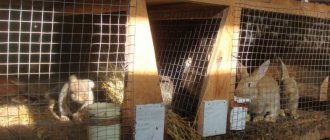Types of cows by direction
All cow breeds are divided into 3 types depending on their direction:
- Lactic.
- Meat.
- Meat and dairy (combined).
If your goal is only to obtain milk, then you need to choose purebred dairy animals. They are distinguished by a light head and bone structure, long legs, an elongated body and a large udder. They have well developed lungs and digestive system. These cows are characterized by high annual milk yields, exceeding 3 tons of milk.
If you are going to trade beef, take a closer look at the 10 best beef breeds, which will be discussed in a separate section below. They are always large in size, characterized by early ripening, heavy weight, and strong physique. The milk produced by beef heifers is usually only enough to feed the calves.
If you need individuals with good milk production and decent meat quality, you should look for meat and dairy cows, which are profitable to keep. They have average milk yields, good slaughter yield and tasty meat.
Did you know? Scientists suggest that the first domestication of cows took place during the Early Neolithic period in the Altai - India - Western Asia region. In those days, people tamed aurochs and zebu, which are considered the ancestors of modern cows. Since then, the body size of these animals has decreased by 3 times.
Hairworm in cows: symptoms and treatment methods
In addition to lice, the skin of farm animals can be affected by lice eaters or lice eaters, as they are also popularly called. These are small insects. Their size is up to 2 mm. They are wingless and gnawing. They do not damage the skin, but with their jaws they damage the hair. As a result, bald patches form on the skin. The skin area remains unprotected.
It is open to blood-sucking insects and gadflies, which lay eggs under the skin of animals.
Exposed skin is vulnerable to ultraviolet radiation, wind and precipitation. Microcracks appear on it, through which pathogens of infectious diseases penetrate. What to do if a lice beetle is found in cows? What treatment is recommended?
Signs of the disease
Lice eaters most often settle in the groin, submandibular area, and areas around the eyes. The wool here is the most delicate. You can find out that an animal is affected by a lice eater by the bald patches on these parts of the body. Calves are especially affected.
They have soft fur and delicate skin. The disease is called trichodectosis. The insect lands on the skin of an animal from an already infected individual. Trichodectosis develops if the barn is dirty and sanitary standards for keeping cattle are not observed.
- Once on the hair of a cow, an adult lice eater lays eggs. A clutch can consist of 10 eggs. They quickly harden and are securely attached to the fur, thanks to the uterine secretion, which is secreted from the glands of the insect. The eggs are white and clearly visible on the fur. The presence of clutches is a symptom of trichodectosis.
- After 10 days, larvae emerge from the eggs. They begin to grow and undergo 3 molts. Remnants of hard epithelium remain on the fur. This is another sign of trichodectosis.
- Lice eaters are bisexual. After 12 days, the larvae become mature and begin to mate. New masonry appears.
More on the topic: Description of cow breeds without horns
The stages of development of lice eaters must be taken into account in order to properly treat the animal and treat the barn. Eggs and larvae are not affected by any means. The treatment is carried out twice.
Lice eaters in cows most often develop during the stall period. High humidity and warmth are a favorable environment for insects. With the beginning of spring, animals begin to shed their fur and molt.
Insects also fall off along with the fur. Without a host, the lice eater can live for 3 days.
This must be remembered, because the time of molting animals is the most optimal for preventive treatment of the barn against insects.
How to choose a cow when buying
So, you have decided what you want to get from a cow - milk or meat. Next, you need to select the breed and perform a visual inspection of the animal. When purchasing breeds of different directions, attention should be paid to special nuances.
Features of choosing a dairy cow
When choosing a good thrush, you need to pay attention to the appearance of the animal, its behavior, and also, of course, the size and shape of the udder.
The best high-yielding cows today are considered to be:
| Breed name | Amount of milk yield per year, kg | Milk fat content, % |
| Holstein | 6500–7000 | 3,7 |
| Black and white | 5500–6000 | 3,5 |
| Jersey | 3000–3500 | 5–6 |
| Simmental | 5000–6000 | 4 |
| Aishirskaya | 4000–5000 | 4–4,3 |
| Red steppe | 4500–5000 | 3,6–3,7 |
| Hereford | 4500–5000 | 4 |
| Yaroslavskaya | 3000–3500 | 4–4,2 |
| Kholmogorskaya | 3500–4000 | 3,6–3,7 |
| Dutch | 4000–4500 | 4 |
External signs
When choosing a purebred cow for milk, you need to ensure that its exterior characteristics meet the standards. It is impossible to accurately estimate future productivity based on external data. However, there are some factors you need to pay attention to:
- age;
- the animal's well-being;
- size, shape and condition of the mammary glands.
In addition, you should know that good dairy animals should have a voluminous, but not very saggy belly, which indicates a well-developed digestive tract, as well as a developed sternum with a large distance between the ribs, which indicates a large lung capacity.
It is necessary to give preference to cows with light, elongated heads, on which thin, short horns are located. It is also important to pay attention to the development of the rump - cows with a wide rump calve easily.
Important! If possible, you should buy a cow together with a veterinarian, who will immediately assess its health condition and correctly determine its age.
Another nuance that should not go unnoticed when buying a cow is the position and condition of the lower limbs. They must be strong and widely spaced, otherwise the animal will get very tired on pasture and eat poorly, which means it will be unproductive.
Foot position: a) correct, wide foot position, b) saber foot position, c) elephantine, straight foot position, d) x-shaped foot position
Age
Undoubtedly, you need to buy a cow that is not old. Most often it is advised to buy a heifer - a pregnant female in the 5-6th month of pregnancy. They usually ask for a higher price than for a heifer, and less than for an adult, whose productivity is already known.
The advantages of such an acquisition:
- soon the possibility of getting a calf;
- the opportunity to properly milk a cow yourself and make a good thrush out of it.
Risks of such a purchase:
- unpredictability of calving - difficult birth is possible;
- unpredictability of productivity - it can only be approximately determined based on information about relatives and external characteristics;
- In the future, heifers will have to be accustomed to milking and milking on their own - this may take several months and a lot of effort.
Experts also recommend taking a closer look at those individuals that have gone through 2 calvings. The approximate age of an animal can be determined by its horns and teeth.
There are rings on the horns.
Their number indicates how many times the cow has given birth. To this number it is necessary to add 2 years - the age at which females are most often mated. Thus, if you count 3 rings on the horns, then the animal is probably 5 years old. If the cow calved annually, then the rings on the horns will be evenly spaced. If calving did not occur in any year, then the distance between the rings will be uneven.
Health status
The following signs will indicate that the animal is in good health:
- cheerful appearance;
- well-groomed shiny coat;
- lively, shiny eyes, without discharge;
- healthy teeth;
- firm and easy gait.
Sick animals often lie down and walk little, cough, have a sad expression in their eyes, a drooping head, disheveled, dull fur, and discharge from the eyes and nose. They have no appetite.
Udder condition
It is imperative to examine the mammary glands. In order to get the greatest amount of milk from a milking cow, you should choose an animal with a wide, bowl-shaped udder. It should protrude well forward, fit close to the body and attach high at the back. It’s good if all 4 lobes are even and symmetrically located. When palpated, the mammary glands should be soft and elastic, without hardening. When examining the nipples, you should pay attention that they are the same in size - from 8 to 10 cm in length and 2-3 cm in diameter, have a cylindrical shape and hang vertically. They should be free of any wounds or growths.
The veins in the udder should also be clearly visible, which indicates a well-developed circulatory system.
Udder shape: 1 – bathtub- – the udder is spread far forward, elongated, wide and fairly deep. Its length is 15% or more greater than its width; in plan it has the shape of an elongated oval (ovoid); 2 – cup-shaped – medium length and width, rather deep, somewhat rounded; its length is only 5–15% greater than its width, and in plan it has the shape of a small oval; 3 – rounded, narrowed – with a small area of attachment, narrowed downwards, nipples close together; 4 – goat – with underdeveloped anterior or strongly hypertrophied and drooping posterior lobes, sharply delimited by a lateral groove; 5 – primitive – underdeveloped, hemispherical, with small, closely spaced nipples. You should avoid purchasing a heifer with a pendulous (goat) triangular-shaped udder with poorly developed lobes, as well as with thick and long nipples. As a rule, such animals produce little milk.
Important! The development and growth of the udder lasts up to 4–6 births. And extinction occurs after 7–8 births. The highest productivity of cows is usually shown after the 4th calving. The duration of lactation is influenced by housing conditions, balanced nutrition, quality of care and competent milking technology.
Features of choosing meat breeds
The following breeds are considered the best meat breeds:
| Breed name | Weight, kg | |
| bull | cow | |
| Aberdeen Angus | 800 | 550 |
| Belgian Blue | 1250 | 900 |
| Hereford | 1000 | 600 |
| Kalmytskaya | 1000 | 550 |
| Kazakh white-headed | 1000 | 600 |
| Santa Gertrude | 1000 | 600 |
| Charolais | 1000 | 800 |
| Shorthorn | 1000 | 500 |
| Aquitaine light | 1100 | 560 |
| Kianskaya | 1200 | 700 |
A good meat cow should have a strong, muscular body build, with well-developed back and front parts. From the side, the body should be in the shape of a rectangle. It is necessary to select individuals with large dimensions, a deep and powerful sternum, thick skin, a massive head and neck, and short limbs. The size of the udder in representatives of these breeds does not matter - as a rule, it is poorly developed. However, when purchasing, you need to pay attention to its condition.
When purchasing bulls, you need to pay attention to the condition of their genitals. It is cheapest to buy beef calves, but you need to take into account the fact that they need to consume breast milk until they are 3 months old.
Superstitions about goats and goats
The goat is afraid of disease, forest animals and even the unclean!
The bearded goat was “lucky” to be recorded as a relative or, as an option, as a creation of the devil himself. One of the legends says that an evil spirit created a creature with a bad smell and an equally bad character by urinating under a bush. And he himself was running away as fast as he could when something shaggy, horned and heart-rendingly bleating climbed out from under the branches at him! That is why a bad pedigree did not prevent the goat from being a welcome guest in any barn, because it scared away evil spirits from other cattle. But the list of mystical duties of the bearded beast did not end there.
Near other animals
- In addition to the devil, the goat drove away the weasel from the cattle, which used to run on the backs of horses, bite and bother them.
- The horned settler's friend, the goat, bravely met with her breasts and took upon herself all kinds of illnesses, warding them off from the other inhabitants of the barn.
- The goat also healed people. It was believed that if an animal was fed grass on the threshold of a sick person’s room and then taken out, it would take the disease with it. And a goat's horn hidden under the pillow will relieve insomnia.
Every day there is one such hour when the goat disappears from the stall. At this time, he is scheduled for a spa treatment with his creator, the devil, who lovingly combs the horned beast’s beard.
Meets on the way
- A good sign is to meet a goat before starting a journey.
- If you notice three black goats in the mountains, you know that a treasure is buried nearby.
- Goat beard hairs in your pocket bring good luck.
To find out if a goat's milk smells good, you need to sniff the top of its head between the horns.
Folk signs when choosing cows
Over the centuries, wise people, purchasing and trading cows, noticed some signs that are now passed on from generation to generation:
- Thus, it is believed that when buying cattle you cannot bargain. Otherwise, the thrush may be offended that you do not appreciate her, and in the future she will repay you with obstinacy or low productivity.
- When purchasing, you need to give such bills so that the seller must give change. The change must be collected.
- When examining an animal before purchasing, you need to look into the ears. The presence of a large amount of sulfur in them, according to popular opinion, indicates a good fat content of milk.
Best dairy breeds
Dairy cattle breeds are leaders in productivity and efficiency among all milk-producing animals. You can judge the performance of an animal when choosing by carefully studying its pedigree. Today, there are several dozen high-milk breeds that differ in appearance, proportions and milk yield.
The table shows the main characteristics of dairy breeds and their annual milk yield.
Additional tips when choosing
When buying a cow, you need to clarify the following questions with the seller:
- how old is she;
- what is her character?
- productivity of the mother (if the breed is dairy) and father (if the breed is meat), sisters and brothers;
- number of calvings and when were the last ones;
- when the first insemination was performed (should be done between 18–20 months);
- were there any problems during calving;
- what food does he prefer?
- does she need feeding during lactation;
- availability of vaccinations and antiparasitic measures.
It is also advisable to try milking the cow before purchasing, paying attention to the ease of milk release, and taste the milk.
Receiving a calf
The baby is born, and he needs to be greeted correctly. Reception of the calf is carried out only on a clean cloth or sheet. His nose and eyes are cleared of mucus. You can entrust this work to a cow, but first-calf heifers sometimes get scared and don’t know what to do with the child. Tie the baby's umbilical cord with sterile threads and trim the remaining edge with scissors. Treat the wound with any antiseptic, such as hydrogen peroxide or alcohol.
If a cow calves normally, she usually copes on her own. If the birth was difficult, then the nurse often does not have the strength to care for her baby. In this case, milk the cow and feed her colostrum to the calf. This must be done no later than 60 minutes after his birth. Afterwards, the calf is placed in a separate pen or left under the cow.
How to choose a heifer for a cow
If you refused the advice to purchase a heifer or a cow, then you need to know how to choose a heifer. The difficulty is that her body, including the udder, is not yet fully formed. Therefore, it is impossible to judge future productivity from them. In this case, it is necessary to rely only on the healthy appearance of the female, her agreeable character and the information provided from the seller about the milk yield of the mother and sisters on the maternal and paternal side.
The age of the heifer is determined by the length of the horns. At the age of 1 to 20 months, horn growth is 1 cm per month. That is, to determine the age of a heifer, you need to measure the horns and add 1 to the number of centimeters.
At 18 months, a healthy heifer should weigh at least 300 kg.
Did you know? The average life expectancy of cows is 20 years.
The record for longest life in the world was set by a cow named Big Bertha. She died in 1993, having lived 48 years and 9 months. She gave birth to 39 calves throughout her life. Thus, in order to purchase a good cow with high productivity, you should pay attention to its physique, health and age. When choosing a dairy breed, you should give preference to those individuals that have underdeveloped muscles, strong legs, a large barrel-shaped belly and a large bowl-shaped udder with clearly visible veins. When choosing a cow for meat, you need to take a large individual, with a deep chest and muscular build.
Cow behavior...
It seems that after cats and dogs, the cow is the most generous pet in terms of signs. Keeping a keen eye on the herd, the owners tried to guess what kind of offspring to expect, whether there would be a change in the weather and what the future would bring. They say that someone succeeded.
…predicting the weather
- Before the rain, cows greedily eat grass, trying to stock up for future use.
- If the entire herd becomes agitated, roars for no apparent reason and raises its tails, then a storm is approaching.
- On the eve of big bad weather, milk yields drop, and just before a rainstorm, the milk, striking from the udder into the milk pan, begins to foam.
- A cow hits the fence with its tail - the weather will improve and it will be sunny.
- If the cows lie on the ground, it means that it has warmed up and the heat is close.
- If, after grazing, the herd hurries into the barn on its own without any urging from the shepherd, the first frosts occur.
...during pregnancy
Two calves of the same color - great luck
- If the cow just can’t get along with the bull, you need to treat her with a piece of bread and salt, and definitely through the fence, otherwise it won’t help.
- Is there a risk of miscarriage? You need to throw the ax over the animal's back three times. It is important not to scare the expectant mother, otherwise trouble will definitely not be avoided.
- If a pregnant cow's udder begins to swell from the back, then wait for a bull. From the front - a chick.
- If a pregnant Burenka tries to lick her back, she will bring a bull. Does your tongue run along the sides? Wait for the chick.
- A bull should also be expected if the cow’s tail curled like a “rope” or went in waves before calving. But when it becomes disheveled or remains straight, another nurse with an udder should be born.
- The birth of twins, oddly enough, was considered a sign of a fire. However, the trouble should have passed by if the calves turned out to be single-haired, because this event promised prosperity and good luck. But the motley kids caused despondency - nothing bad would have happened from such a sign... Apparently, the last sign is associated with the belief about the Brownie, who welcomes only animals of a certain color in his yard: no matter how you turn it, the Owner will probably dislike one of the calves...
...to predict future events
- If the cows returning home break through the fence and enter the garden, misfortune awaits the family.
- If a black Burenka looks into the window of a room with a seriously ill person, he will not recover. It is strange that the sign did not apply to cows of a different color. Apparently, pestles and saffron milk caps were endowed with a prophetic gift to a lesser extent.
- When a cow moos and worries all night in the barn, she senses trouble. Just in case, take note: in some regions of Russia it was believed that only mooing after midnight or at dawn was dangerous. You always have the opportunity to brush aside a frightening sign; the time is not clearly indicated!
- It’s bad when an animal moos three times in the face of a specific person. According to legend, he doesn’t have long to wander around the world.
- If a cow licks its head, the hair will grow thick and coarse. It is no coincidence that in our everyday life there is still a saying about a stubborn cowlick on the head: “like a cow licking it.”
- Whoever runs his tongue across the face of a cow will not get tuberculosis. However, experienced farmers say that concern for your health has nothing to do with it. The animal does not have enough salts, which it tries to lick from your skin.
- If a cow stops milking, it must be sold to the youngest member of the family for a symbolic sum. With a new owner, the animal will quickly come to its senses.
- Don't sing in the barn, otherwise the milk will disappear.
- For the same reason, strangers should not be allowed into the barn. From a mystical point of view, the animal is jinxed. From a logical point of view, a person unfamiliar with the habits of the Little Cow, who is also noisy and has a new smell, can scare the cows.
- If you handle the udder with unclean hands, your milk yield will decrease. This is not even a sign, but a rule! It is useful to observe hygiene requirements in all ages.
- If one of the cattle sheds a horn, you must definitely find the loss and throw it into the well near the house, otherwise your wealth will go away. Most likely, the sign is associated with an old belief: if you own part of an animal, you own it entirely. And vice versa: if the horn is lost, you will lose the whole cow.
Uterine prolapse
Sometimes cows experience complications when calving. After childbirth, in some cases the uterus begins to emerge behind the baby. This is very dangerous and can lead to the death of the nurse. Uterine prolapse occurs due to too strong pushing, which expels not only the fetus. Sometimes this pathology is caused by improper delivery, for example, when a calf is roughly pulled out.
Treatment for uterine prolapse involves repositioning it and suturing it. This procedure must be performed by a veterinarian. The doctor also usually prescribes a course of medications. For the next calving, it is better to arrange with the veterinarian in advance, as uterine prolapse may recur.
Why does a dog wag its tail?
If a cow's tail helps to cope with hordes of insects that attack the animal in the summer, then a dog needs a tail to communicate with its own kind, as well as with humans. Through this part of the body, dogs express their emotions: joy and delight, wariness or aggression.
Have you ever watched two dogs meet? Sometimes one of them has a tail raised quite high. If at the same time she proudly wags him from side to side, the dog seems to be saying to his rival: “I am more important than you, stronger, but I am kind and do not wish you harm.”
Does your faithful friend tuck his tail between his legs when he meets his brother? He seems to be saying to his friend: “You are stronger, you are the leader, and I only obey you.” If the meeting takes place between unfamiliar dogs of approximately equal strength, their tails are raised only slightly. This is a signal of alertness, warning.
When severe winter cold sets in, northern dogs - huskies - help their owner go hunting, guard reindeer herds, and pull light sleighs. At night, they dig holes in the snow, curl up in them and cover their noses with their fluffy tail so that it does not freeze.
Retention of placenta
The cow's calving ended successfully, the calf is healthy and fed, but it is too early for the owner to relax. Within a maximum of 10-12 hours, separation of the placenta should occur, only after this the birth is considered completely completed. If this does not happen, then the owners should call a veterinarian.
The reasons for the retention of the placenta may be:
- unbalanced feeding during pregnancy;
- lack of vitamins;
- lack of exercise;
- stress.
Before the doctor arrives, the owners can give the cow sweet water. If you manage to collect amniotic fluid, you can give that too. The veterinarian must examine the cow and administer medications to her. If all these steps do not produce results, then the afterbirth is separated manually.
Possible complications
If the cow’s calving time has come, but she does not show any signs, then this should alert the owner. You can invite a veterinary specialist who will determine the reasons for the lack of labor. If calving has already occurred, complications sometimes arise after it. Most of them require consultation with a veterinarian.
Complications may be associated with the age of the wet nurse. It has long been noted that older cows calve harder and are more likely to have problems later. Young cows also often have difficulty giving birth. The main reason for the appearance of pathologies is improper preparation of the animal for calving. At risk are emaciated and obese cows, as well as cows with gynecological problems.
Why does a dog need a tail?
As you know, there is nothing superfluous in nature, and the tail of animals is no exception. For example, for a kangaroo the tail is a support and rudder, for fish it is the main organ of movement, and for birds it is also an ornament necessary during the mating season. But why does a dog need a tail? Let's find out.
There are more similarities between humans and dogs than you might think. Four-legged animals, for example, are not devoid of intelligence, they are capable of experiencing emotions, they even have a sense of humor.
As for external components, humans also have a striking distinctive feature of dogs—the tail. Yes, yes, at an early stage of development, the human embryo can boast of a small tail, which, however, soon stops growing and forms into a tailbone. But if everything is more or less clear with the tailbone, then why does a dog need a tail?
